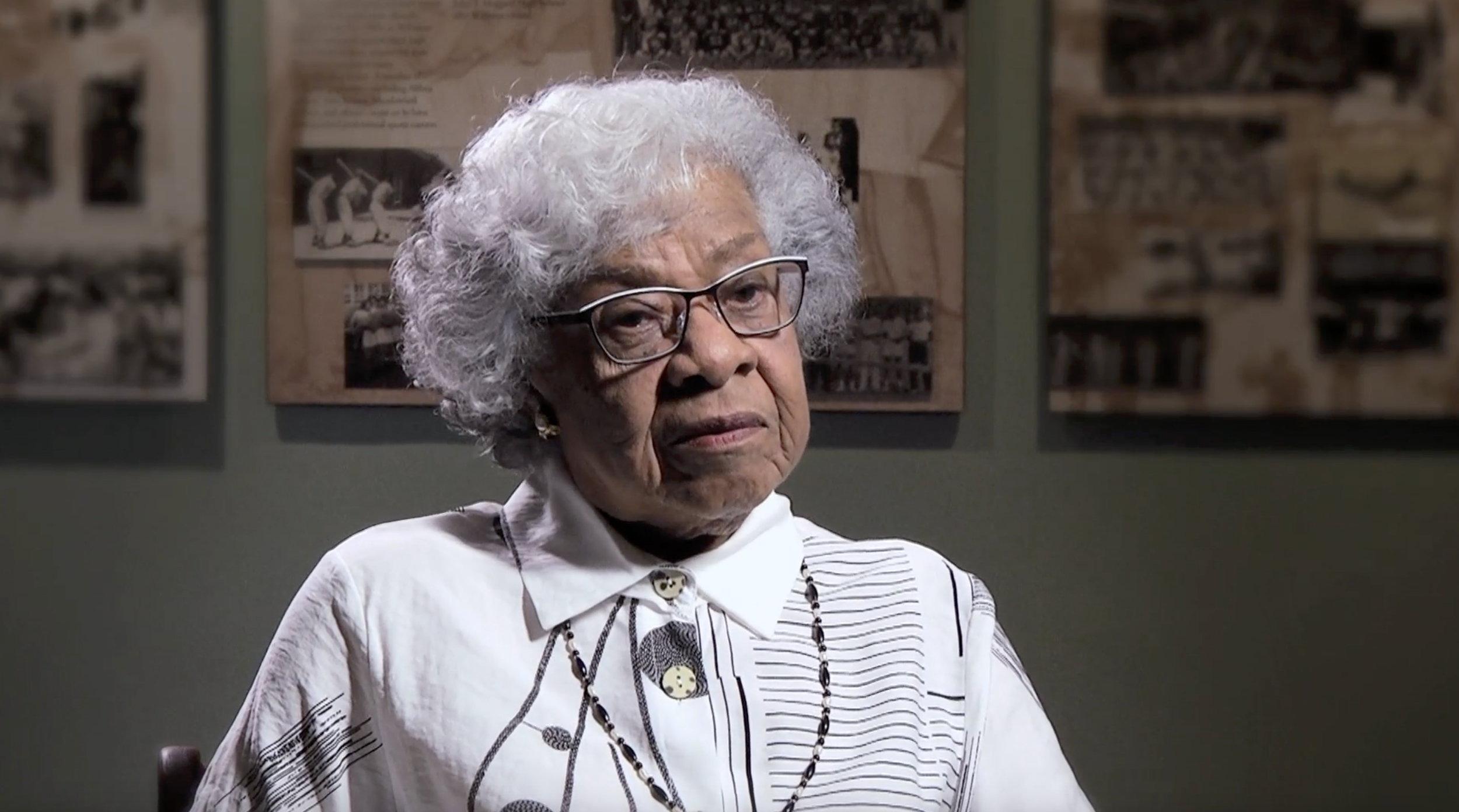Longtime Wilmington, N.C. educator, community strategist and author Bertha Boykin Todd discusses the impact Black educators historically have on their students. Video by Paul Charles.
"Although it was not unusual for African Americans to take pride in their institutions, black Wilmington was distinctive in the purposeful mission of its educators, the extent and quality of its institutions, and the devotion of the community to their cause, as well as the twentieth century history that had helped to give rise to it."
— "Black Wilmington and the North Carolina Way" John L. Godwin
Artwork
Portraits and performance: The project features portraits of educators from Wilmington who taught in segregated and desegregated schools. Using oral history accounts, the performance shares how Black educators cared for and taught their students.
Sources: Image references for portraits created in this project are from issues of the Willistonian, the yearbook for Williston Senior High School. Courtesy of the Cape Fear Museum of History and Science. The image of Ernest A. Swain is also courtesy of the Cape Fear Museum of History and Science. The image of David Clarke Virgo is from The Pen, a publication from Saint Augustine’s University.
Oral history excerpts for the performance work are sourced from the Randall Library Oral History Collection at the University of North Carolina Wilmington and the Behind the Veil series from the David M. Rubenstein Rare Book & Manuscript Library, Duke University.
Data
School data: The data that partly inspired this project centers on the current experience of Black students in New Hanover County. The highlighted points below illustrate the existing gaps between white and Black students; yet history suggests this was not always the case, indicating an examination of the past may inform academic and social practices that can be brought forward for a more equitable educational experience.
The percent of white third graders at a proficient reading level is 2.3 times higher than Black third graders. Out of 115 school districts in North Carolina, 97 reported a Black third grade reading proficiency. NHCS ranks low in Black reading proficiency at 71st out of 97 districts. Even though white reading proficiency ranks the 9th highest in the state, the gap between Black and white reading proficiency is the 9th largest.
Black students make up 50% or more of suspensions while making up less than 20% of the student body.
Source: Cape Fear Collective
14.3% of principals are Black compared to 81% who are white. The percentage of Black principals is the lowest it has been in at least the past five years.
Suspension data from the 2020-21 school year shows Black students faced short-term suspensions 8.5 times more than white students.
Source: North Carolina School Report Cards
Opportunity gap: White students are 5 times as likely to be enrolled in at least one AP class as Black students.
Achievement gap: Black students are, on average, academically 3 grades behind white students.
Source: ProPublica
Project Statement
Forbidden to teach or study. Segregated, under-resourced facilities. Court-ordered, integrated, unsupportive environments devoid of familiar culture. The journey toward education has always been complex for the Black community, but there was something exceptional about Black institutions before desegregation.
Despite the circumstances, students were encouraged to thrive both academically and culturally. Building upon Black pride and deep communal relationships, schools and educators instilled a collective responsibility for success in their students so they could navigate the world around them. Then, according to the Black educators themselves, things changed. As Wilmington native and longtime educator Lethia S. Hankins recounted about desegregation, students and community "lost a lot in that transition."
Lost in Transition uses portraiture and performance to celebrate the Black educational past, continue a dialogue about present learning conditions, and explore ideas to create equitable education.
Reference books
"My Restless Journey," Bertha Boykin Todd
"Every Man Should Try," Hubert A. Eaton
"Strength through Struggle," William M. Reaves
"Robert R. Taylor and Tuskegee," Ellen Weiss
"History of the American Teachers Association," Thelma D. Perry
"Black Wilmington and the North Carolina Way," John L. Godwin
"Black Teachers on Teaching," Michelle Foster
"Quality Education as a Constitutional Right," Perry, Moses, et al
"The Education of Black People," W.E.B. Du Bois
"Young, Gifted, and Black," Theresa Perry
"Their Highest Potential," Vanessa Siddle Walker
"Too Much Schooling, Too Little Education," Mwalimu J. Shujaa
"Greater Than Equal," Sarah Caroline Thuesen
"We Face the Dawn," Margaret Edds
"The Education of Blacks in the South: 1860 to 1935," James D. Anderson
"Fugitive Pedagogy," Jarvis R. Givens
"The Negro In Our History, Carter G. Woodson
"The Education of the Negro," Carter G. Woodson
"The Free Negro in North Carolina: 1790 to 1860," John Hope Franklin
"Black Reconstruction," W.E.B. DuBois
"The Rosenwald Schools of the American South," Mary S. Hoffschwelle
"Biased," Jennifer L. Eberhardt
This project is a partnership between consultant and Black On Black Project founder Michael S. Williams and the North Carolina Museum of Art. It is made possible through funding from the William R. Kenan Jr. Charitable Trust.
Audio Description
This exhibition includes Audio Description. Click here to listen descriptions of the artwork.

